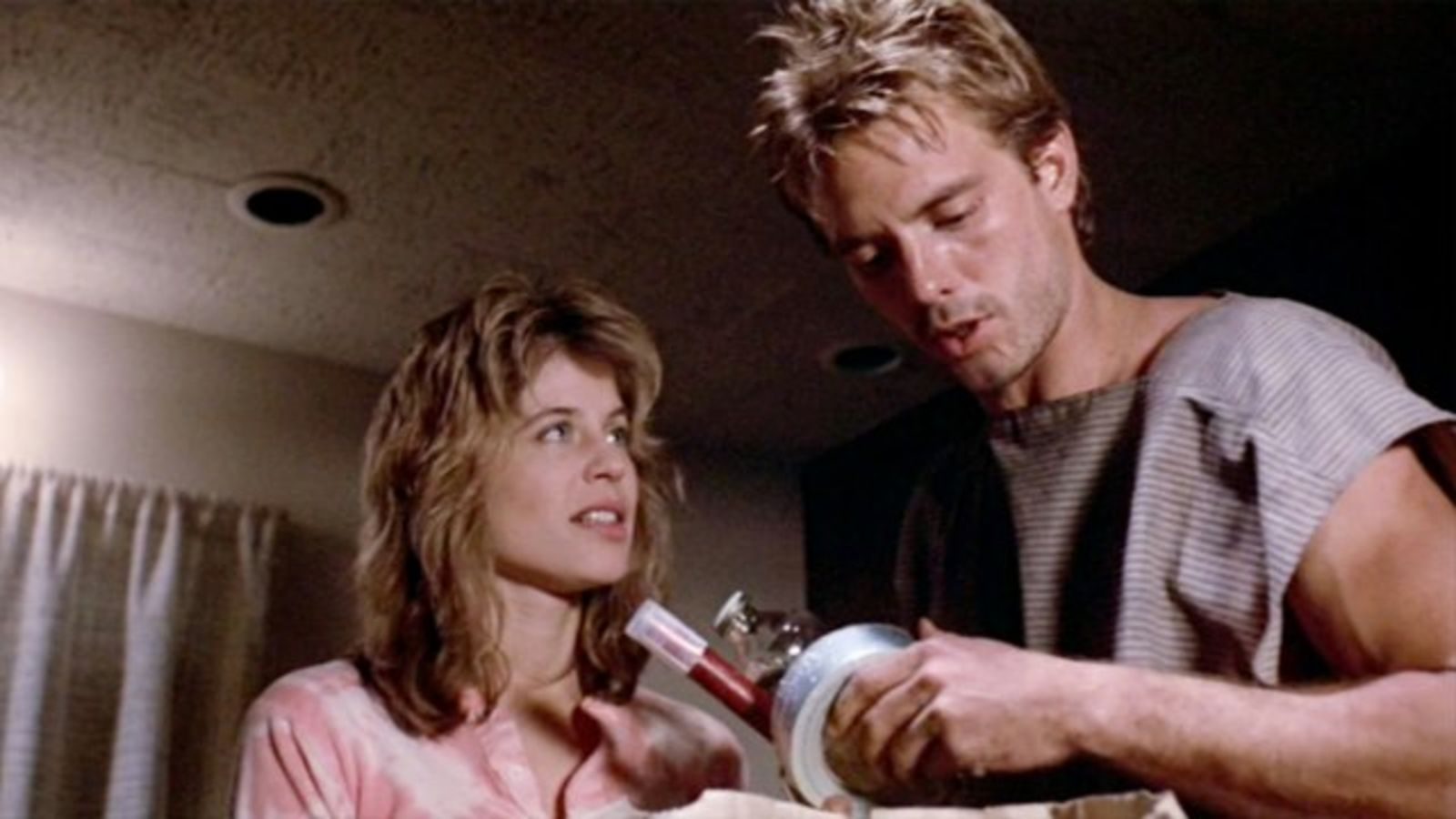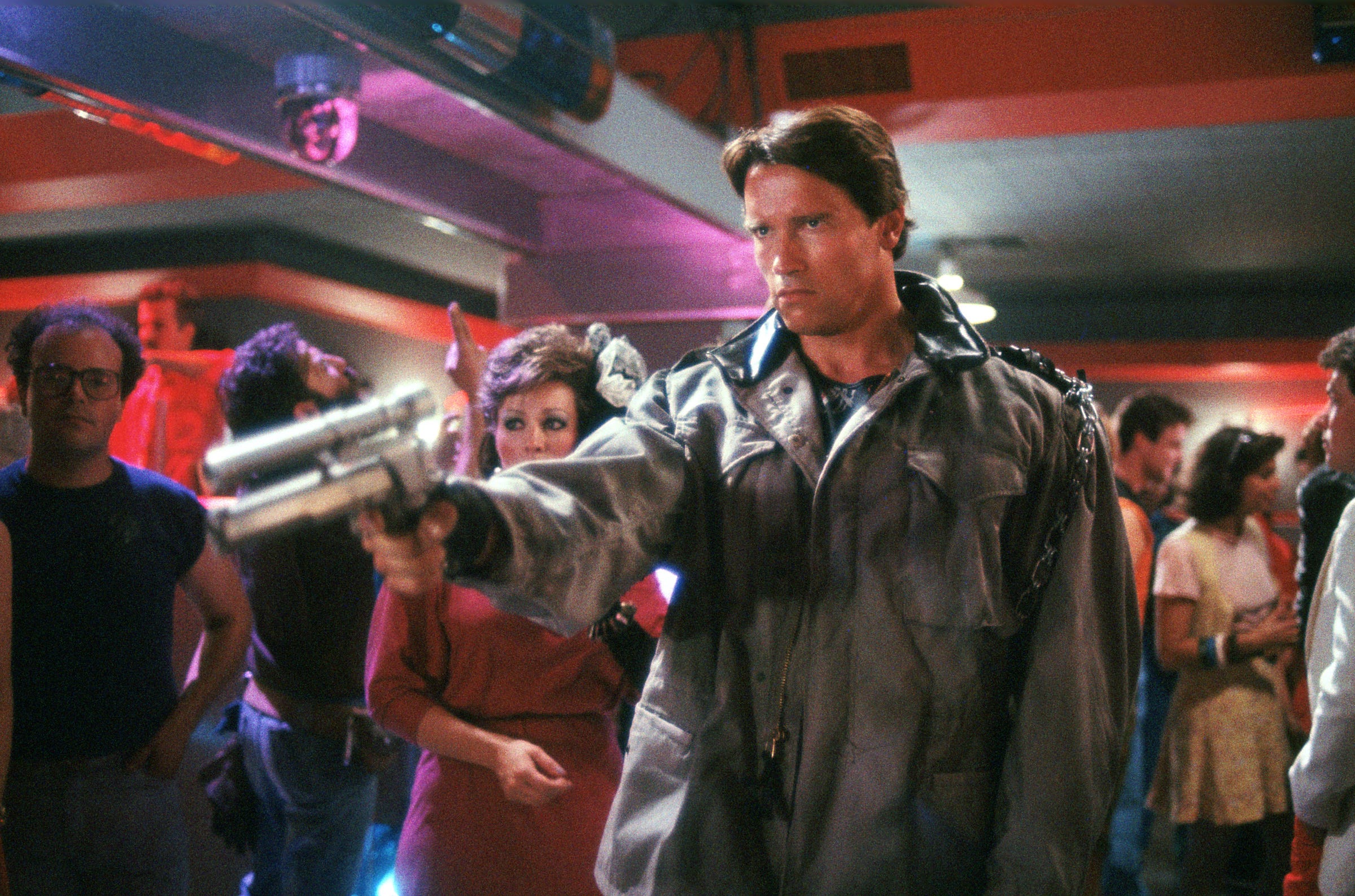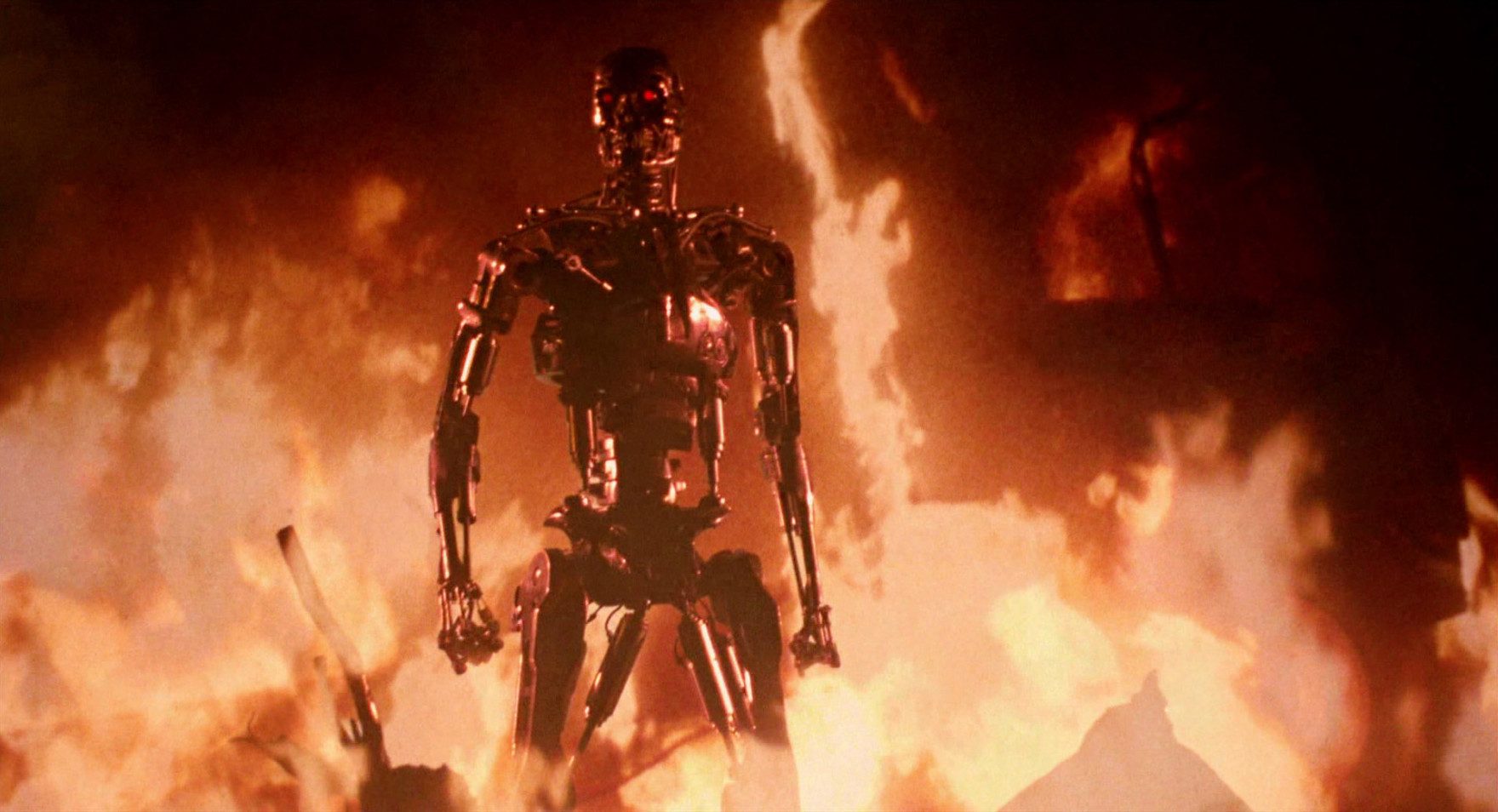

The strangest realization you’ll have re-watching James Cameron’s The Terminator is that it’s a low-budget film. That feels surreal, considering the legacy this film has cemented in sci-fi and action cinema, let alone making Arnold Schwarzenegger the 1980’s most bankable Hollywood star. But The Terminator is just that: a B-movie premise that Cameron’s masterful vision and memorable characters transformed into an A-list thriller. And more than thirty years later, the film holds up remarkably well. Mostly.
The Terminator was a gamble for Cameron. With only Piranha II: The Spawning under his belt at the time, Cameron sold his script- conceptualized from a nightmare of a killer machine attacking him- for a dollar in exchange for being put in the director’s chair director. A mish-mash of gritty sci-fi, John Carpenter’s Halloween and the dystopian landscape of Mad Max, the film’s narrative genius was its time-travel component. In The Terminator, Los Angeles waitress Sarah Connor (Linda Hamilton) finds herself hunted by the Terminator (Schwarzenegger), a cybernetic assassin disguised under a layer of human skin who’s been sent back to 1984 from the dystopian, robot-ruled future of 2029. Sarah’s only salvation lies in Kyle Reese (Michael Bien), a human resistance soldier sent from that future to protect her, or rather her unborn son John, who will eventually grow up to lead the Resistance against the machines.


In any other director’s hands, this premise could have been made schlocky or campy. But Cameron grounds his story in clever sci-fi logic. Despite taking place solely within L.A., the dialogue establishes a clearly defined set of stakes that threatens humanity on a nuclear holocaust scale. Our only clue to this future are Reese’s flashbacks: a ruined landscape where building rubble and wire are the cover for a never-ending war of survival between man and machine. These moments are brief, but they do much to humanize Kyle’s character and legitimize the threat he describes to an oblivious Sarah. You can’t stop Judgement Day in this world, only protect the mother that will bring about humanity’s last hope.
Equally clever is how the film’s larger sci-fi elements are embodied in its cybernetic avatar infiltrating contemporary society. After all, this film came out at a time when the Macintosh was just releasing and the threat of nuclear war still hing over everyone’s heads. The Terminator took these fears and merged them into an all-encompassing nightmare of the machines taking over. Words like Skynet and Cyberdyne are namedropped to hint at this growth of computer technology, to the point that it would eventually gain control over the nukes. But where later Terminator films would go into great detail to define their roles, here they’re just names.
And then there’s the true star of this film: Arnold Schwarzenegger. As Cameron stated, from a logical perspective, giving an infiltration unit Terminator this form makes little sense. If the goal was to blend in with humanity, you’d fail miserably with a 6-foot, 2-inch tall bodybuilder who speaks in a weird Austrian accent. But from a visual standpoint, Arnie works because there’s simply no human being like him. He’s physically menacing, a walking practical effect whose limited dialogue and unfeeling approach to murder sold moviegoers on the Terminator’s inhumanity. Everything and everyone that isn’t Sarah Connor is just an obstacle to be thrown aside or shot in the head. This leads to easily The Terminator’s most iconic sequence: a police shootout where the Terminator massacres an entire precinct to get to Sarah. When he said the iconic phrase “I’ll be back” a scene earlier, he meant it.


Most moviegoers familiar with Schwarzenegger’s action hero status, especially post-T2, will probably find his role in The Terminator slow-paced by comparison. More importantly, they’ll find it scary. Upon arriving in the present, the Terminator’s first act is to rip out the heart of a punk who won’t give him some clothes. When he needs to self-repair, he peels back synthetic tissue on his arm to reveal mechanical gears and wires covered in blood. And once the mechanical exoskeleton rise from an explosion like Frankenstein’s monster, it really feels like this creature is unstoppable.
Equally unique is the mystery surrounding the film’s first act. Until Reese tells Sarah about the future she’s destined to birth, the audience is relatively in the dark about what’s going on. As the Terminator goes on a killing spree against random Sarah Connor’s across L.A., hoping he’ll get the right one eventually, it’s clear our Sarah is being targeted, but for what? The answer’s obvious now, but this Sarah Connor isn’t the weapons expert mom from T2 who regularly tops “Best Female Character” lists. This is an ordinary woman with a roommate and a lackluster job who’s gotten caught in some greater futuristic war beyond her comprehension. Sarah’s arc is about growing into the fighter she’s destined to become.
This emphasis on characterization is something the post-T2 films have unfortunately downplayed in favor spectacle and revisiting franchise high points. Because of the film’s cat and mouse pursuit, we’re made to spend time with Connor and Reese as they gradually grow closer together. It’s great character development that also builds on film’s paradoxical sci-fi moments, turning John’s birth and Kyle’s relationship with Sarah into a self-fulfilling act. Ironically, Terminator’s inevitability of history would be completely rejected in the sequel, still the better film in my opinion.
Of course, being a low-budget sci-fi film, The Terminator‘s special effects do show their age. A scene of the villain self-repairing his face requires a noticeable Arnie mask whose lips look incredibly rubbery. And while the final chase sequence through an industrial factory remains intense, it can be a bit jarring whenever the camera cuts back to a stop motion robot swatting at Michael Bien. That’s not to say the Terminator model looks bad- its exposed teeth and gleaming red eyes remain iconic for a reason. But it just goes to show that even James Cameron- the visionary of Avatar’s Pandora and the T-1000’s liquid metal effects- had to start with low-grade tech at one point.


Still, re-watching this film is always a blast. The camerawork is solid, the set pieces remain iconic, and Cameron manages to give the condensed story a sense of impressive grandiose. And of course we have that iconic score. Hearing those industrial synths and iconic “dum dum dum… dum dum!” theme from Brad Fiedel always get my heart pumping. It’s simultaneously scary and epic, which defines this franchise quite well.
Verdict: 4.5 out of 5 Stars
Much like Mad Max and The Evil Dead, The Terminator set a benchmark for low-budget films that spawned iconic franchises. It made Schwarzenegger an icon and wrote the blueprints for robot dystopian fiction that all other films must live up to. But above all, it’s just a damn good story, which is all a good director needs to be recognized. What more fitting time to watch a movie about the apocalypse than during a pandemic?
